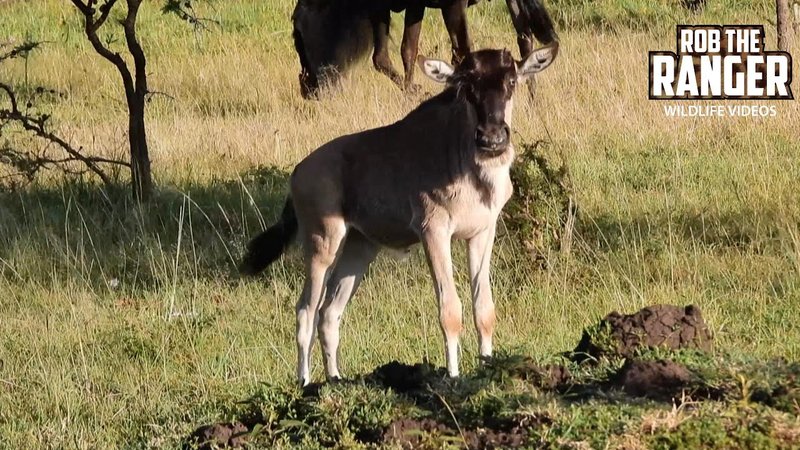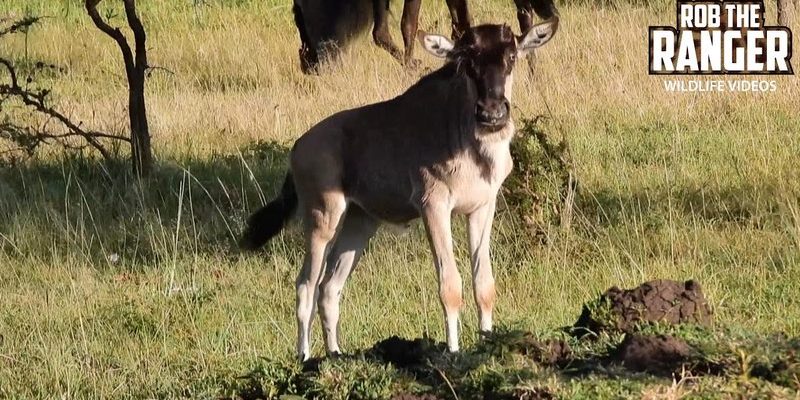
In this article, we’ll tackle those common myths and misconceptions about the gnu. Much like a game of telephone, information can get twisted over time, leading to some pretty funky beliefs that don’t hold up under scrutiny. So grab a cup of coffee, and let’s clear up the fog of misinformation surrounding this unique African animal.
Myth 1: Gnus Are Just Like Cows
You might be surprised to learn that while gnus and cows share some similarities, they are not the same. Both belong to the Bovidae family, but gnus are much more specialized for life in the wild. Cows are domesticated animals bred for agriculture, while gnus have evolved to thrive on the African plains. They have long legs built for speed, allowing them to escape predators like lions and hyenas.
Another key difference is their social behavior. Cows tend to form smaller herds with close maternal bonds, while gnus gather in massive groups during migration. Some herds can number in the thousands! This behavior not only helps in protection against predators but also allows them to find food more efficiently as they graze across vast expanses.
So, while you might think they look similar at a glance, the differences between gnus and cows run deeper than appearances.
Myth 2: Gnus Are Not Smart Animals
Honestly, it’s a common misconception that gnus don’t possess any intelligence. Many people think of them as just big, lumbering beasts, but that couldn’t be further from the truth. Gnus have developed remarkable survival strategies that demonstrate their adaptability. They can remember migratory routes and recognize the sounds and scents of predators, which helps them stay safe in the wild.
For example, gnus engage in synchronized movements when they are threatened, which can confuse predators. This coordinated behavior requires a certain degree of awareness and communication within the herd, proving that gnus are indeed much smarter than they appear.
Plus, studies on animal behavior show that gnus can learn from their experiences. If they encounter a particular danger, they can remember and avoid that area in the future.
Myth 3: All Gnus Are the Same
You might be wondering if there’s more than one type of gnu, and the answer is yes! There are actually two main species of gnus: the black wildebeest and the blue wildebeest. The black wildebeest is a bit smaller and has unique, curved horns, while blue wildebeests are larger and have more straight, elongated horns.
These differences aren’t just cosmetic; they also play a role in their habitats and behaviors. The blue wildebeest is generally more social and migratory, traveling in larger herds, while the black wildebeest tends to inhabit more arid regions. Each species has adapted to its specific environment, showcasing the incredible biodiversity among these animals.
So while they may often be lumped together under the name “gnu,” recognizing their unique characteristics is essential for understanding their place within the ecosystem.
Myth 4: Gnus Are Just for Show During Migration
Here’s the thing: gnus aren’t just putting on a show when they migrate. Their migration is a vital survival strategy. Every year, thousands of gnus embark on a long trek across the African plains, following the seasonal rains to find fresh grass and water sources. This massive movement is one of the greatest wildlife spectacles on Earth.
But it’s not just about the numbers; it’s a complex journey filled with danger and challenges. Along the way, gnus encounter obstacles like rivers filled with crocodiles, rough terrain, and hungry predators. Each step of the migration requires leadership, coordination, and quick reflexes. Their instincts guide them, but this journey showcases their resilience and adaptability as a species.
So don’t dismiss their migration as mere spectacle; it’s a critical aspect of their survival.
Myth 5: Gnus Are in Constant Danger
While it’s true that gnus face many threats in the wild, it’s a misconception that they are always in danger. Yes, they have predators, such as lions and hyenas, but gnus have evolved some effective strategies to stay safe. Being part of a large herd provides safety in numbers, making it more challenging for predators to single out individuals.
Additionally, gnus are highly aware of their environment. They rely on instinct and communication within the herd to detect dangers early. For instance, when one gnu senses a threat, it often alerts the rest of the herd, prompting them to prepare for a quick escape. This instinctual reaction showcases their ability to survive in the wild, and although they experience danger regularly, they are well-equipped to handle it.
So while they may have to be wary, it doesn’t mean they are constantly on the brink of disaster.
Myth 6: Gnus Have a Short Lifespan
You might think that gnus, given their harsh environment and many predators, have a short lifespan. However, that’s not necessarily the case. In the wild, gnus can live to be around 20 years old. Of course, their life expectancy can vary based on factors like habitat, food availability, and threats from predators.
In a protected environment, such as a wildlife reserve or in captivity, they may even live longer. Their health and longevity depend significantly on access to food and the absence of threats. So, while many gnus face dangers in the wild, those that manage to survive often live a considerable length of time.
Understanding the realities of gnu lifespans can reshape our perception of these creatures and highlight the importance of conservation efforts.
Clearing up these common myths about gnus not only helps us understand these fascinating animals better, but it also enriches our appreciation for the ecosystems they inhabit. Whether it’s learning about their social structures, migration patterns, or unique characteristics, gnus are truly remarkable creatures deserving of our respect.
By understanding the truth behind these misconceptions, we can foster a deeper connection with wildlife and support conservation efforts to protect these magnificent animals in their natural habitats. After all, the more we know, the better we can appreciate the wonders of nature, and that includes the incredible story of the gnu.

